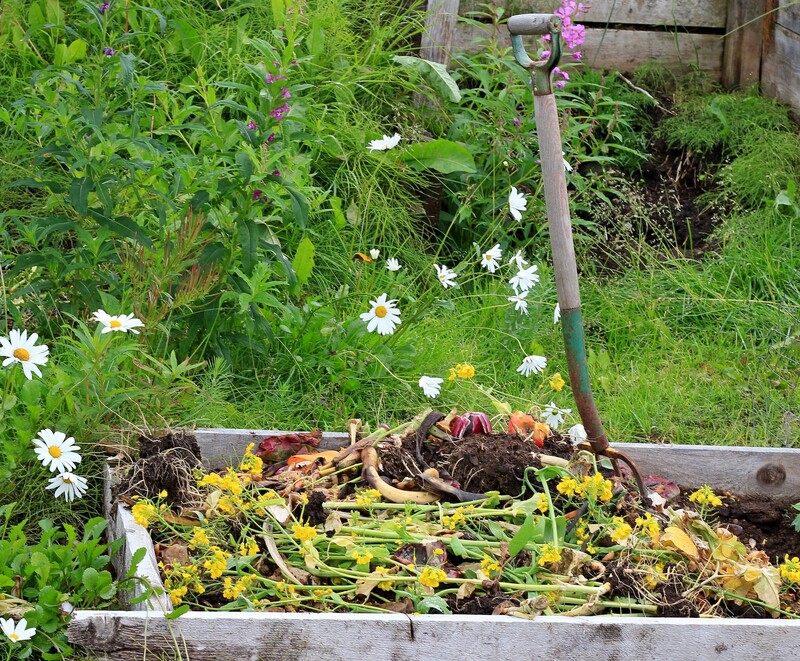Crucial Plastics to Avoid: A Comprehensive List
Plastics are an integral part of modern life, present in everything from packaging and toys to medical devices and household goods. However, not all plastics are created equal. In recent years, health and environmental concerns have brought certain types of plastics under scrutiny. In this comprehensive article, we'll dive into the most crucial plastics to avoid, why they are hazardous, and how you can make safer choices for both yourself and the planet.
Why Some Plastics are Dangerous
Plastics contain a variety of chemical compounds that can leach into food, air, and water, posing health risks. Furthermore, many plastics are not biodegradable and cause long-lasting environmental damage. Here are some key reasons to avoid certain plastics:
- Toxic chemical leaching
- Hormone disruption
- Environmental pollution
- Non-biodegradability
Understanding which plastics are most problematic, and why, empowers you to make informed decisions every day.

Plastic Identification Codes: Decoding the Symbols
Most plastic products are marked with a numbered triangle symbol -- called the Resin Identification Code (RIC). These numbers, ranging from 1 to 7, indicate the type of plastic resin used. Recognizing these symbols can help you avoid the most dangerous plastics in daily life.
What the Plastic Numbers Mean:
- 1 - PET or PETE (Polyethylene Terephthalate)
- 2 - HDPE (High-Density Polyethylene)
- 3 - PVC (Polyvinyl Chloride)
- 4 - LDPE (Low-Density Polyethylene)
- 5 - PP (Polypropylene)
- 6 - PS (Polystyrene)
- 7 - Other (Includes BPA-containing plastics, Polycarbonate, etc.)
Among these, some plastics are significantly more risky than others. Let's look at the critical plastics to avoid for health and environmental reasons.
List of Crucial Plastics to Avoid
Below, we detail the most hazardous plastics, explaining their dangers and typical uses. Where possible, we suggest safer alternatives to protect your health and minimize environmental harm.
1. Polyvinyl Chloride (PVC, Number 3)
PVC is widely used due to its durability and versatility. However, it is considered one of the most toxic plastics in production, use, and disposal.
- Common uses: Plumbing pipes, shower curtains, imitation leather, vinyl flooring, cling wrap, children's toys.
- Hazards: PVC contains and releases hazardous chemicals such as phthalates (used to soften the plastic), dioxins (highly toxic compounds), and heavy metals like lead and cadmium. Dioxins are long-lasting pollutants and known carcinogens. Phthalates are endocrine disruptors that have been linked to reproductive and developmental health issues.
- Environmental impact: Difficult to recycle (rarely accepted by municipal programs) and creates persistent environmental toxins when incinerated or landfilled.
- Alternatives: Look for materials like glass, stainless steel, wood, and safer plastics (HDPE or PP) wherever possible.
2. Polystyrene (PS, Number 6)
Polystyrene is best known as Styrofoam and is popular for its light weight and insulation properties.
- Common uses: Foam cups, takeout food containers, egg cartons, packing peanuts, disposable plates and cutlery.
- Hazards: Contains styrene, a probable human carcinogen. Can leach toxic chemicals, especially when exposed to heat or fatty foods. The tiny particles from polystyrene, or microplastics, persist in the environment and have been found in food, water, and even human blood.
- Environmental impact: Not biodegradable and nearly impossible to recycle in most regions. Contributes significantly to ocean plastic pollution and harms marine life.
- Alternatives: Use reusable or compostable dishware and packaging made from paper, bamboo, or bioplastics.
3. Polycarbonate and Other Plastics (Number 7, "Other")
The category "Other" includes a variety of plastics, but the most notorious are polycarbonate plastics often made with bisphenol A (BPA).
- Common uses: Water bottles, baby bottles, sports equipment, CD and DVD cases, electronic components, food can linings.
- Hazards: BPA is a well-known endocrine disruptor associated with hormonal irregularities, heart disease, type 2 diabetes, and increased cancer risk. Although some "BPA-free" plastics are now available, these are often replaced with similar chemicals (like BPS or BPF), the safety of which is not fully established.
- Environmental impact: Difficult to recycle, accumulate in landfills, and persistent in ecosystems.
- Alternatives: Opt for glass, stainless steel, or BPA-free certified products; check for products marked with safer recycling codes, like #2, #4, and #5.
Other Plastics to Be Cautious Of
4. Polyethylene Terephthalate (PET or PETE, Number 1)
PET is commonly used in beverage and single-use water bottles.
- Common uses: Soda bottles, water bottles, salad dressing containers, peanut butter jars.
- Hazards: While considered safer than PVC or Polystyrene, repeated use and exposure to heat (e.g., leaving a water bottle in a car) can cause it to leach antimony and other chemicals.
- Environmental impact: Single-use prevalence contributes to immense plastic waste globally. Though widely recycled, recycling rates remain low.
- Alternative: For long-term use and heat exposure, prefer reusable bottles made of stainless steel or glass.
5. Low-Density Polyethylene (LDPE, Number 4)
LDPE is considered relatively low risk for direct chemical leaching, but its widespread use in disposable products makes it an environmental concern.
- Common uses: Plastic grocery bags, bread bags, shrink wraps, some food wraps.
- Hazards: Minimal health risks but a major contributor to plastic litter and ocean pollution. Not commonly recycled via curbside programs.
- Alternatives: Use reusable shopping bags and containers.
The Health Effects of Avoiding Hazardous Plastics
The motive for steering clear of dangerous plastics isn't just environmental--it's also about protecting your health and your family's well-being. Researchers have linked chemical exposure from plastics to:
- Infertility and reproductive disorders
- Developmental issues in children
- Hormonal imbalances and thyroid disruption
- Certain cancers (breast, prostate, etc.)
- Metabolic problems, including obesity and diabetes
- Respiratory inflammation and asthma
Children and pregnant women are especially vulnerable to the adverse effects of chemicals such as BPA and phthalates.
Simple Steps to Reduce Plastic Exposure
While avoiding all plastics is impractical, you can minimize your health and environmental risks. Here's how:
- Check Symbols: Always look for the resin code when buying plastic goods. Avoid #3 (PVC), #6 (PS), and #7 ("Other") whenever possible.
- Swap to Alternatives: Use glass, stainless steel, ceramic, or natural fiber containers and dishware.
- Avoid Heating Plastics: Do not microwave food in plastic containers or use plastic wrap during cooking. Heating increases chemical leaching.
- Choose Fresh Foods: Reduce reliance on packaged, processed foods, which often come in hazardous plastic packaging.
- Reusable Bags and Bottles: Invest in reusable shopping bags, water bottles, and storage containers to cut down on single-use plastics.
- Proper Disposal: Recycle plastics according to local guidelines and actively participate in plastic waste reduction initiatives.
Environmentally Friendly Alternatives: What to Use Instead?
You can choose safer, eco-friendly materials that don't contribute to pollution or harmful chemical exposure. Here are top alternatives:
- Glass: Non-reactive, reusable, and widely recyclable. Ideal for storage and food preparation.
- Stainless steel: Durable, safe for hot and cold items, and recyclable.
- Ceramic and porcelain: Excellent for dishes and mugs. Free from hazardous chemicals.
- Bamboo: Renewable, compostable, and commonly used for cutlery, straws, and even plates.
- Biodegradable bioplastics: Made from cornstarch or other natural sources, though their safety and true eco-friendliness may vary. Always check for certifications.
Check Eco-Labels and Certifications
- Products certified as BPA/BPS-free
- USDA Certified Biobased Product
- Compostable certifications (BPI Compostable, OK Compost, etc.)
Frequently Asked Questions About Harmful Plastics
Which plastic number is the safest for food and drink?
Generally, #2 (HDPE), #4 (LDPE), and #5 (PP) are considered safest for food contact. Always use plastics as intended and avoid exposing them to heat. When possible, choose glass or stainless steel for food and beverages.
Is "BPA-free" plastic safe to use?
"BPA-free" plastics may not contain bisphenol A, but some use substitute chemicals (like BPS or BPF) with similar potential risks. The safest strategy is to limit the use of all plastics in food preparation and storage.
Can plastic pollution be reduced by individuals?
Absolutely! Every small step -- from using reusable bags and bottles to choosing wisely when shopping -- contributes to the fight against plastic pollution. Support businesses and policies that prioritize sustainable packaging and responsible disposal.

Conclusion: Make Informed Choices, Protect Your Health and the Earth
Being aware of the crucial plastics to avoid is a vital first step toward a healthier life and a cleaner planet. By steering clear of PVC, polystyrene, polycarbonate, and other hazardous plastics, you reduce your exposure to harmful chemicals and lower your personal contribution to environmental degradation.
Make it a habit to:
- Check the plastic resin code on products
- Avoid heating food in plastic containers
- Use safer, sustainable alternatives
- Dispose of plastics responsibly
Your daily choices make a difference. Encourage your family, friends, and community to join the movement toward safer materials, healthier living, and a more sustainable future. Share this comprehensive list of hazardous plastics to avoid and empower others to make smarter, healthier choices today!